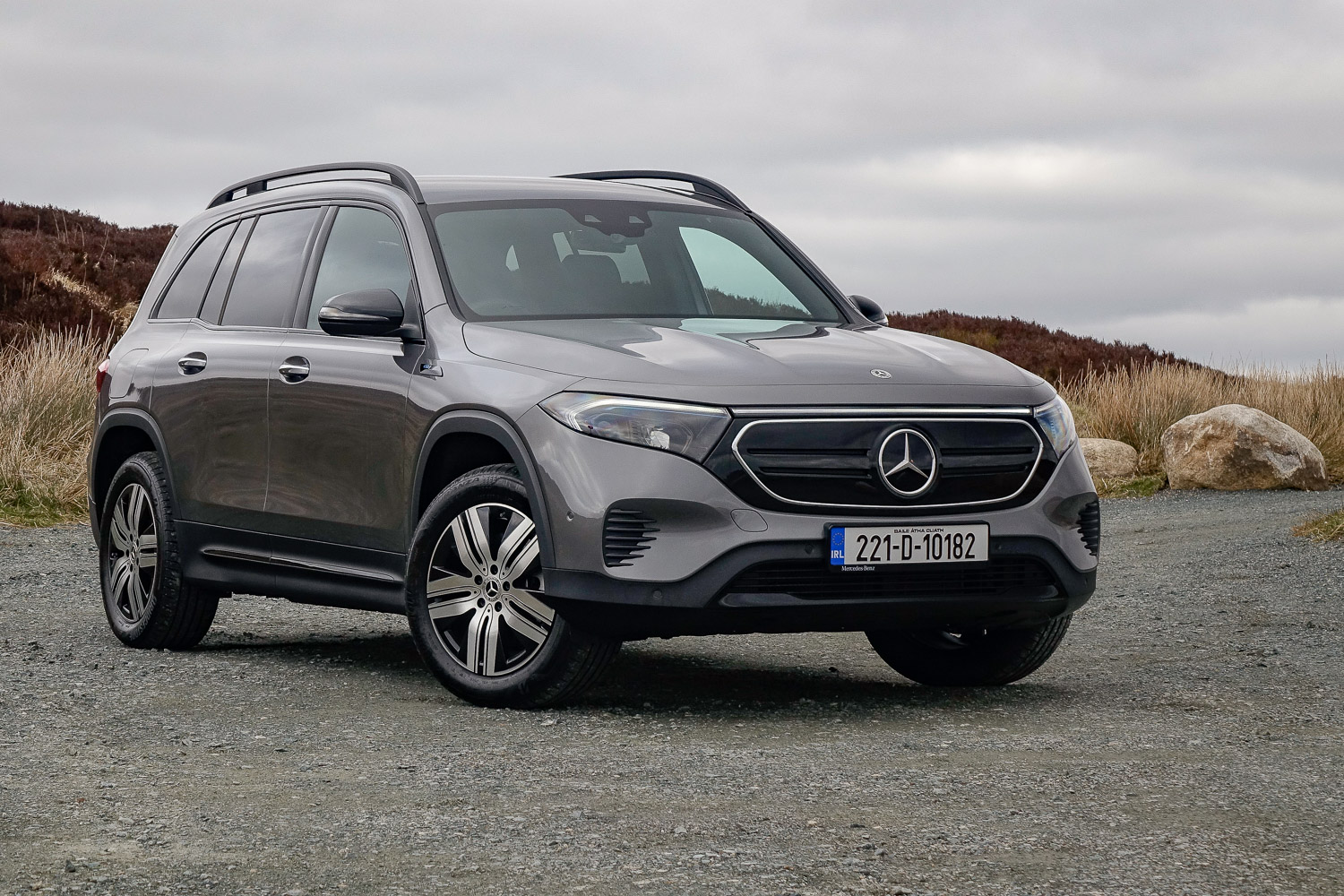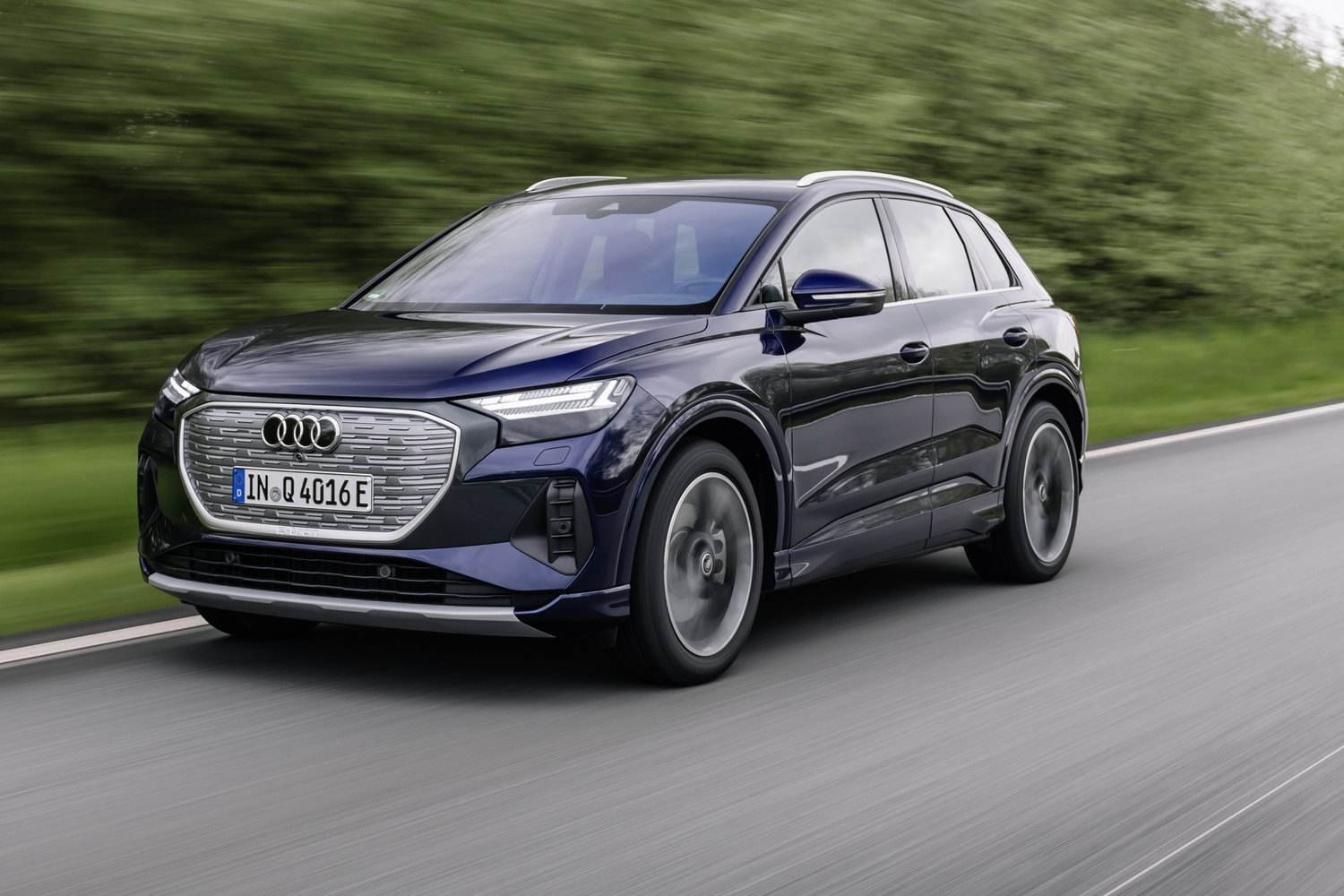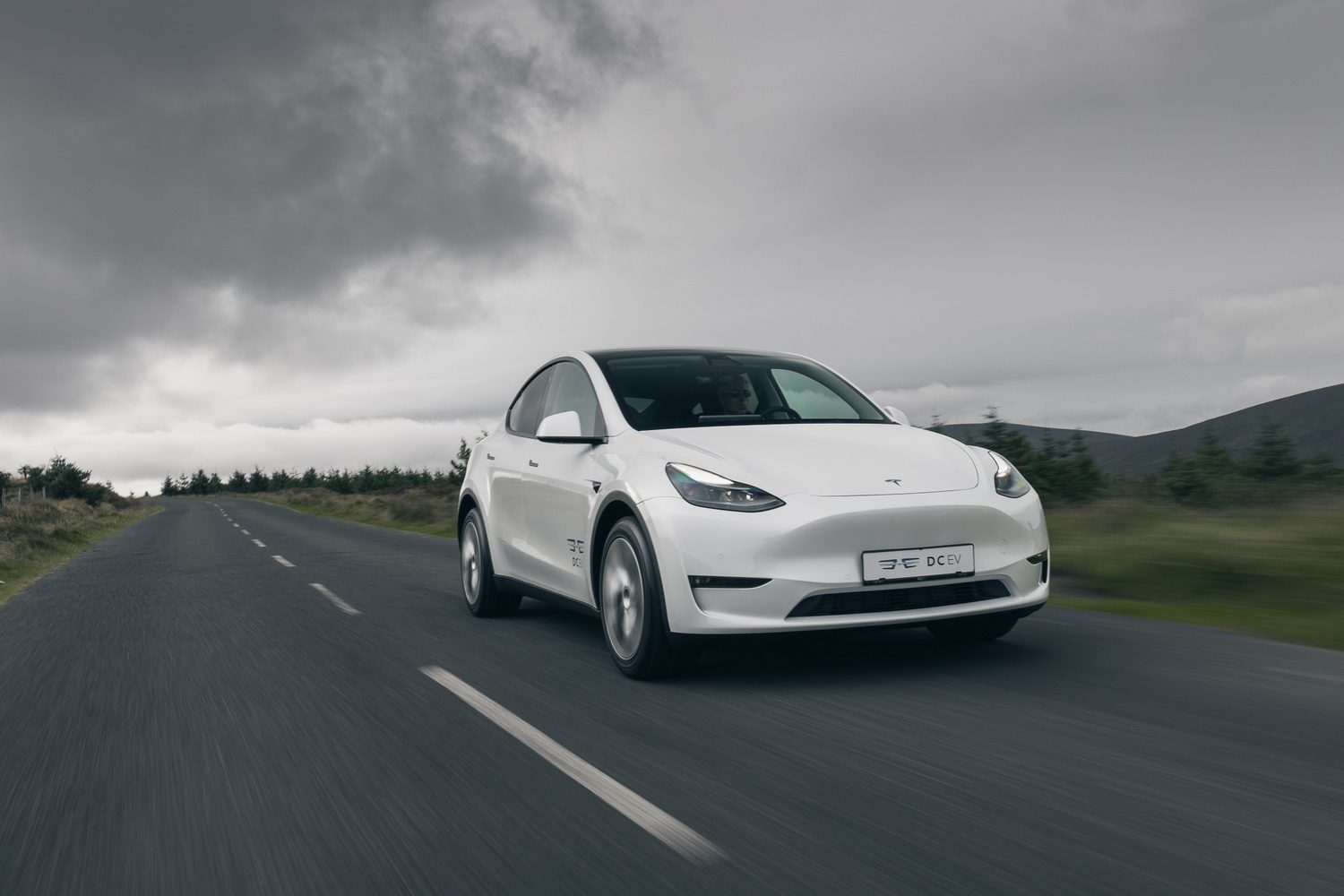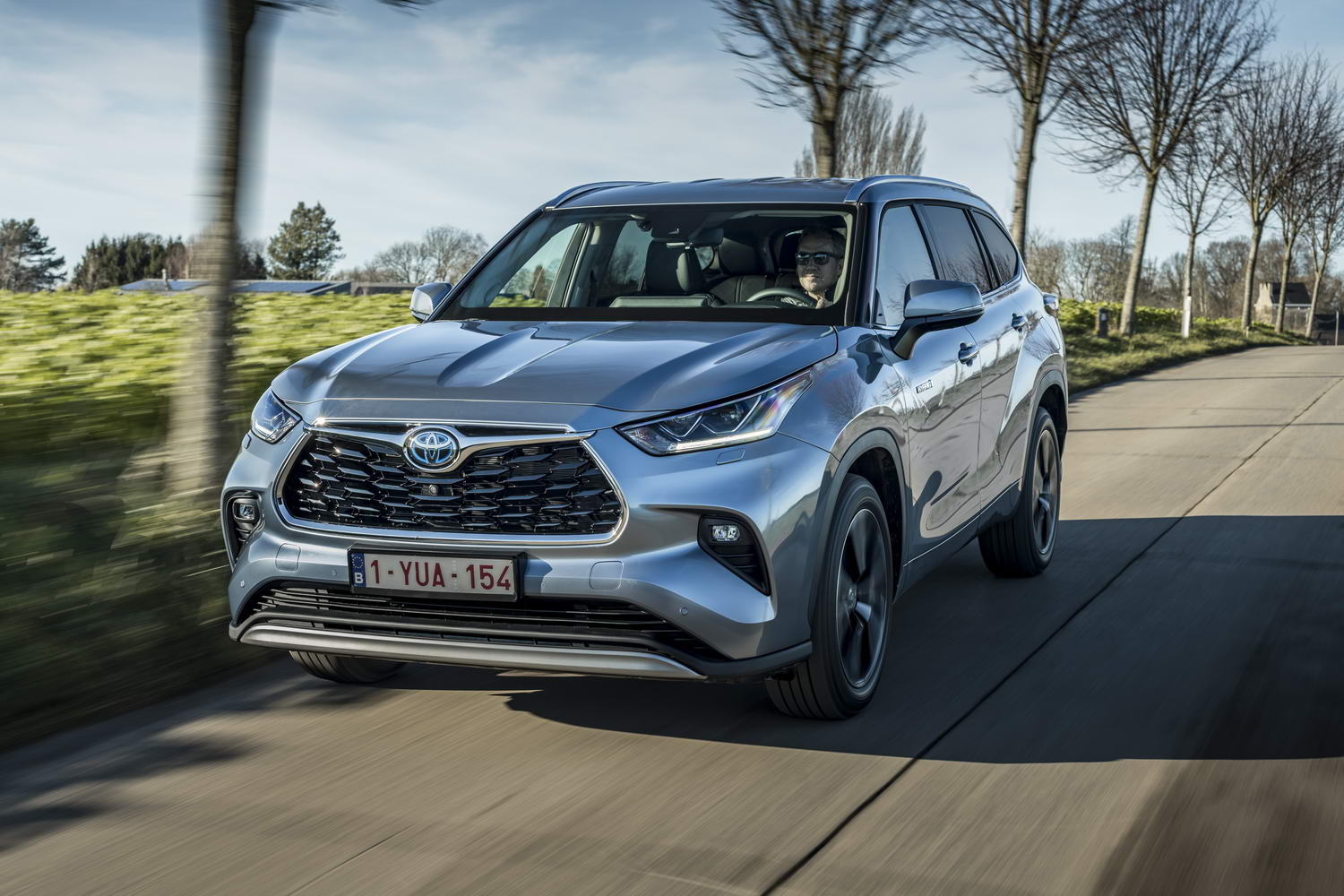Mercedes EQB overview
Marketed under the Mercedes-EQ brand (though we don't believe anyone calls it the Mercedes-EQ EQB...), the EQB is the all-electric version of the Mercedes GLB SUV. By way of reminder, the GLB shares a lot with the Mercedes GLA, but it's bigger so as to accommodate an extra row of seats. That's unique among the premium brands (there is no compact seven-seat SUV on sale from Audi, BMW, Jaguar, Lexus or Volvo) and now Mercedes has added another USP by launching a full line-up of electric versions, badged EQB.
The transformation from GLB to EQB follows the same recipe as that of the Mercedes EQA, meaning a smoother appearance at the front thanks to a blanked-off grille, new bumpers and badging, unique wheels and LED light bars front and rear that stretch across the width of the car. As we said in our EQA review, the result is a meeker looking car in the pursuit of aerodynamic efficiency.
Our first taste of the EQB is in the mid-range 300 4Matic model, though Mercedes Ireland has added about €7,000 worth of optional extras, so you're looking at a €72,571 car.
The Mercedes EQB model range
Irish pricing for the EQB starts at €64,030 for the EQB 250 Progressive. The '250' is the only version to feature a single electric motor, driving the front wheels. Peak power is 190hp and the maximum range is 426km. Next up is the EQB 300 4Matic, which starts at €68,505 in Progressive spec. The extra motor brings all-wheel drive and total maximum power output of up to 228hp, while the electric range can be as high as 435km depending on specification. The range-topping EQB 350 4Matic, which can also apparently manage up to 435km on a charge, starts at €71,520, and its two motors max out at 292hp. All three variants use the same 66.5kWh battery pack.
There's a price walk of about €1,100 from Progressive to Electric Art across the range, and then another €3,700 or so to AMG Line. Standard equipment on the Progressive trim includes 18-inch alloy wheels, electric-opening tailgate, LED lights all round, power folding door mirrors, keyless entry and go, an ambient lighting system, heated front seats, climate control and the excellent MBUX infotainment system with a 10-inch instrument display and 10-inch touchscreen. Within the latter you'll find the reversing camera display, Apple CarPlay and Android Auto smartphone mirroring, navigation and much more. Synthetic leather upholstery - called 'Artico' by Mercedes - is also standard.
Electric Art adds backlit trim panels inside, two-tone upholstery (we'll talk about this more below), a unique design of 18-inch wheel, illuminated door sills and a few other details to set it apart, such as the distinctive rose gold air vent finish.
Finally, AMG Line adds a little more visual presence thanks to a set of five-spoke alloy wheels (still 18-inch in diameter), a more pronounced 'grille' and new bumpers. Inside, it gets lots of AMG branding, a flat-bottomed AMG steering wheel, sports seats in a mix of Artico and Dinamica (a tactile microfibre) and stainless-steel pedals.
The Mercedes EQB interior
Up front, the interior of the EQB, unsurprisingly, feels like that of the Mercedes GLB - and that's a good thing. It's a stylish looking and high-quality cabin with plenty of space for the front-seat occupants in all directions and plenty of adjustment of the driving position (albeit our test car featured electric adjustment for the seats, which is an optional extra). The EQB is better-equipped than the entry-level GLB, too, so the electric model gets the more impressive infotainment screen on the dashboard as standard.
The Electric Art upgrade, meanwhile, adds distinctive rose-gold coloured air vents, complemented by a similar hue for the centre sections of all the seats. It won't be for everyone, but we think it lifts the cabin. As does the ambient lighting system when paired with the upgraded 'spiral-look' trim; it illuminates it from behind, giving the interior a dramatic look at night. It's configurable to your colour preferences and can be switched off by using the good voice control system if you can't be bothered to seek out the option in the infotainment system. As ever, this is summoned up by uttering "Hey Mercedes!" - and it's one of the better such systems on the market.
Operation of the MBUX system can be done via several different ways, depending on which you prefer. The central display is a touchscreen, for example, while there's a trackpad-like interface on the centre console. The latter is tricky to use accurately, even if the car is stopped, but the little thumbpads on the steering wheel work exceptionally well. That on the left-hand spoke operates the main infotainment screen, while the one on the right controls the configurable digital instrumentation in front of the driver. We're glad to report that there are physical controls for the air conditioning system, while a cluster of buttons around the trackpad offer up shortcuts to various sub-menus, too.
Ahead of that trackpad are two cupholders, a USB-C port and a wireless charging pad, all of which can be concealed by a sliding cover. Behind is a usefully sized cubby with a butterfly-style opening that serves as a central armrest.
Access to the second row of seats is through quite wide-opening doors, but the EQB doesn't feel as spacious as the GLB. A little research reveals that, like the EQA, the EQB's rear floor is raised to accommodate the battery pack underneath. That means rear-seat passengers' feet are at a higher point, which makes it less comfortable for adults sitting in the back. Saying that, it makes the rear floor almost all at the same level, which is to the benefit of the middle rear passenger.
The distance from the front seat backs to the sliding rear bench (it splits 60:40) is unchanged from the GLB, so it's only those with longer legs that are affected, but it's worth bearing in mind if you've tried the GLB out for size and you're assuming that the EQB is identical inside. In terms of width and overall headroom, nothing has changed, so three adults at a push will sit in the second row, or three teens. The base of the central seat is quite flat, but it's unlikely that a booster or car seat will fit there. There are ISOFIX mounting points on the outer two seats as is the norm.
To allow divvying up of the available space, the second row can slide forward and back, and its backrests can be adjusted for angle, too. Those in the rearmost seats will want the chairs in front moved as far forward as possible, as space is at a premium back there. The two chairs are mounted on the floor, so headroom isn't bad, but there's not a lot of space for legs. Extra cupholders and USB-C ports are included for the rear two rows, however.
With all seven seats in use, the boot is understandably tiny, but it's massive when the rearmost chairs aren't needed, officially holding 495 litres. It's quite an easy task to fold the extra seats down to create a flat floor, and the middle row can also fold down easily to open up a ginormous volume.
The Mercedes EQB driving experience
Like all electric cars, the instant torque characteristic of the EQB's electric motors make it a joy to drive in an urban setting as there's no slack in its responses and no intrusive powertrain noise. A peak of 390Nm sounds impressive, but this is a heavy car, so it never feels anything more than moderately quick. To put it into context, it's not much faster than a good turbodiesel vehicle of the same size would be, but it is far smoother, quieter and more relaxing to drive.
The dual-motor setup of the 4Matic system means there's great traction and it also allows the EQB to be surprisingly competent on a twisty road, which bodes well for driving in slippery conditions. It's designed to be composed and stable rather than engaging, but the steering is well-judged, so keen drivers won't hate it, even if they're not actively relishing the experience. Quietness and civility are the key words here. And the EQB is comfortable, too.
It's hardly worth experimenting with the driving modes, as the default setting, called Comfort, is ideal in most scenarios. Sport mode slightly improves response to the accelerator and firms up the steering weighting, but to little gain. In the Eco setting, the car feels much tardier, so it's best kept for those times when you really need to maximise the range between charges.
More worthwhile is the variable brake energy regeneration system, which the driver can alter using paddles behind the steering wheel. In its strongest setting it's possible to use one-pedal driving and barely touch the brake pedal, while it will coast smoothly at the other extreme of the scale. It's well worth varying between the two depending on whether you are in an urban situation or on a free-flowing road.
We struggled to get near the official energy consumption figure for the EQB on our relatively short test, instead averaging closer to 27kWh/100km, but much of the driving was done in a mountainous region, so it's probably not representative of the average commute...
Our verdict on the Mercedes EQB
Though it's not a perfect car, and not as spacious in the back as we'd like, the Mercedes EQB has a lot going for it. It's best thought of as an occasional seven-seater, but many will be simply fine with that, as there are no other price-comparable all-electric options with this layout available as yet. And if you don't need all the seats, fold them away and you're left with a high-quality electric SUV with lots of equipment and a three-pointed star on the nose.

































